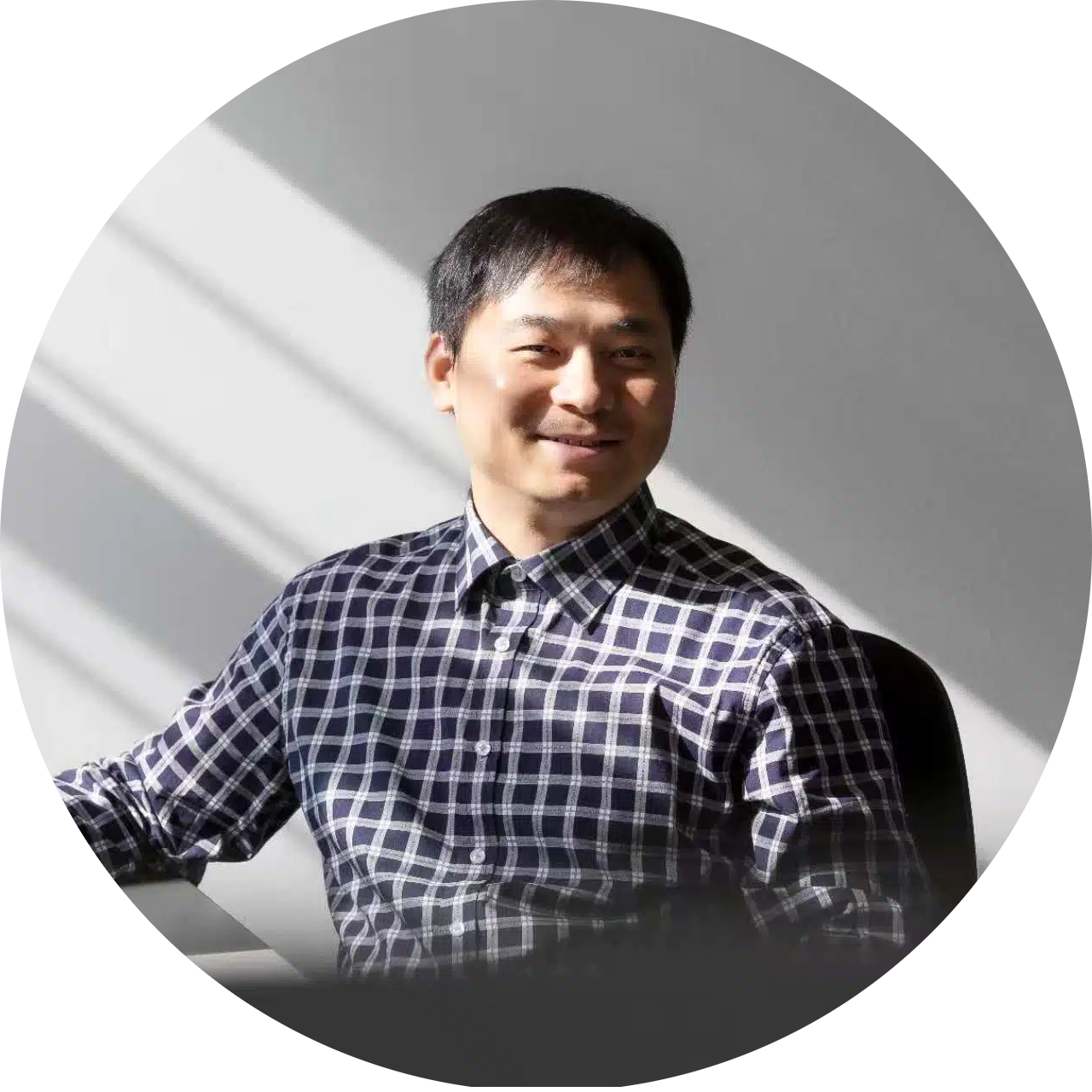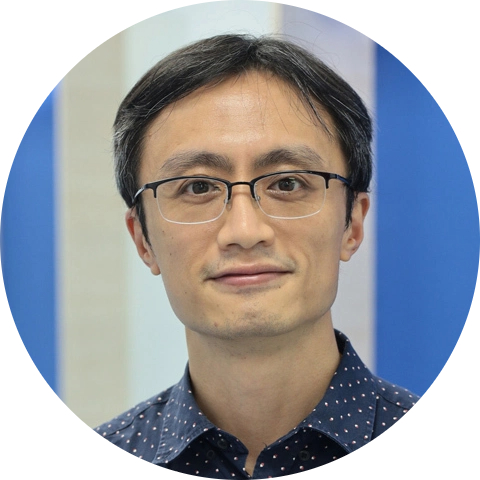Keynote Speakers 主讲嘉宾
 Prof. Frederic Dufaux
Prof. Frederic Dufaux
IEEE Fellow
Université Paris-Saclay, France
Bio: Dr. Frederic Dufaux is a CNRS Research Director at
Université Paris-Saclay, CNRS, CentraleSupélec,
Laboratoire des Signaux et Systèmes (L2S, UMR 8506),
where he is head of the Telecom and Networking
research hub. He is a Fellow of IEEE.
Frederic received the M.Sc. in physics and Ph.D. in
electrical engineering from the Swiss Federal
Institute of Technology (EPFL), Lausanne,
Switzerland, in 1990 and 1994 respectively. He has
over 30 years of experience in research, previously
holding positions at EPFL, Emitall Surveillance,
Genimedia, Compaq, Digital Equipment, and MIT.
Frederic was Vice General Chair of ICIP 2014,
General Chair of MMSP 2018, and Technical Program
co-Chair of ICIP 2019 and ICIP 2021. He is Technical
Program co-Chair of ICIP 2025 and MMSP 2025, and
General Chair of ICME 2026. He served as Chair of
the IEEE SPS Multimedia Signal Processing (MMSP)
Technical Committee in 2018 and 2019. He was a
member of the IEEE SPS Technical Directions Board
from 2018 to 2021. He was Chair of the Steering
Committee of ICME in 2022 and 2023. Since 2025, he
is IEEE SPS Vice President Technical Directions, and
member of the IEEE SPS Board of Governors and
Executive Committee. He was also a founding member
and the Chair of the EURASIP Technical Area
Committee on Visual Information Processing from 2015
to 2021.
He was Editor-in-Chief of Signal Processing: Image
Communication from 2010 until 2019. Since 2021, he
is Specialty Chief Editor of the section on Image
Processing in the journal Frontiers in Signal
Processing.
In 2022, he received the EURASIP Meritorious Service
Award, “for his leadership and contributions for the
development of visual information processing within
EURASIP”.
Frederic is on the Executive Board of Systematic
Paris-Region since 2019, a European competitiveness
cluster which brings together and drives an
ecosystem of excellence in digital technologies and
DeepTech.
He has been involved in the standardization of
digital video and imaging technologies for more than
15 years, participating both in the MPEG and JPEG
committees. He was co-chairman of JPEG 2000 over
wireless (JPWL) and co-chairman of JPSearch. He is
the recipient of two ISO awards for these
contributions.
His research interests include image and video
coding, 3D video, high dynamic range imaging, visual
quality assessment, video surveillance, privacy
protection, image and video analysis, multimedia
content search and retrieval, video transmission
over wireless network. He is author or co-author of
3 books, more than 250 research publications
(h-index=53, 11000+ citations) and more than 25
patents issued or pending. He is in the « World’s
Top 2% Scientists » list from Stanford University.
Speech Title: Immersive Visual Communications: Perspectives and Challenges
Abstract: Nowadays, thanks to rapid
technological progresses over the last decades,
digital images and video sequences are ubiquitous,
with many remarkable and successful applications and
services. A key driver to research and development
activities has been the objective to provide an
ever-improving visual quality and user experience.
In this context, one of the next frontiers is to be
able to faithfully represent the physical world and
to deliver a perceptually hyperrealist and immersive
visual experience. On the one hand, the human visual
system is able to perceive a wide range of colors,
luminous intensities, and depth, as present in a
real scene. However, current traditional imaging
technologies cannot capture nor reproduce such a
rich visual information. On the other hand,
immersive applications aim at giving to the user the
sense of being present and immersed in one location
or environment, without being physically there.
In this talk, I will discuss a few recent research
activities related to hyper-realistic and immersive
imaging. I will first consider point clouds, a very
promising type of representation. One major
distinguishing feature of point clouds is that,
unlike images, they do not have a regular structure.
Moreover, they can also be very sparse. For these
reasons, point cloud processing presents significant
challenges. Here, I will present recent
learning-based approaches for point cloud
compression and quality assessment. In a second
phase, I will discuss high dynamic range imaging and
in particular tone mapping operators (TMO). TMOs are
used to compress the dynamic range with the aim of
preserving the perceptual cues of the scene. Here, I
will show how we can leverage semantic information
as well as contextual cues from the scene to drive a
TMO in a way similar to how expert photographers
retouch images.
 Prof. Alessandro Foi
Prof. Alessandro Foi
IEEE Fellow
Tampere University, Finland
Bio: Alessandro Foi is a Professor of Signal Processing
at Tampere University (TAU), Finland. He leads the
Signal and Image Restoration group and he is the
director of TAU Imaging Research Platform. He is
also the CTO of Noiseless Imaging, a company
specialized in noise-removal, restoration, and
enhancement technology for the imaging industry.
He received the M.Sc. degree in Mathematics from the
Università degli Studi di Milano, Italy, in 2001,
the Ph.D. degree in Mathematics from the Politecnico
di Milano in 2005, and the D.Sc.Tech. degree in
Signal Processing from Tampere University of
Technology, Finland, in 2007. His research interests
include mathematical and statistical methods for
signal processing, functional and harmonic analysis,
and computational modeling of the human visual
system. His work focuses on spatially adaptive
algorithms for the restoration and enhancement of
digital images, on noise modeling for imaging
devices, and on the optimal design of statistical
transformations for the stabilization,
normalization, and analysis of random data. He is a
Fellow of the IEEE for his contributions to image
restoration and noise modeling.
He was the Editor-in-Chief of the IEEE Transactions
on Image Processing from 2021 to 2023. He previously
served as a Senior Area Editor for the IEEE
Transactions on Computational Imaging and as an
Associate Editor for the IEEE Transactions on Image
Processing, the SIAM Journal on Imaging Sciences,
and the IEEE Transactions on Computational Imaging.
He has presented tutorials at several major
international signal processing conferences such as
EUSIPCO (2007), IEEE ICIP (2010, 2014, 2018), and
SPCOM (2020), covering a range of topics including
noise modeling and analysis, adaptive sparse
approximations, image restoration, and inverse
imaging. He is currently a member of the IEEE SPS
Technical Directions Board, of the IEEE TAB/PSPB
Products & Services Committee, and of the IEEE
Conference Publications Committee. He is the Lead
Technical Program Chair of the upcoming IEEE ICIP
2026 in Tampere Finland.
Speech Title: Noise in Imaging: Focus on Correlation and Nonlinearity
Abstract: Understanding and characterizing noise
is a foundational part of the design and analysis of
an imaging system, and it is also essential for the
development of the corresponding image processing
modules. In this talk we consider broad classes of
heteroskedastic image observations and specifically
focus on the noise correlation, the noise
anisotropy, and on the nonlinear effects that can
arise when dealing with capture at low
signal-to-noise ratio, with shallow bit depth, or
when maximizing the coverage of a narrow dynamic
range. We highlight several unexpected and perhaps
counter-intuitive phenomena which, unless suitably
modeled and accounted for, can significantly disrupt
the noise analysis and other operations in an image
processing pipeline. Instances of these phenomena
are shown across various imaging and image
processing systems used in biomedical, defense,
security, as well as consumer applications,
including x-ray tomography, infrared thermography,
confocal fluorescence microscopy, and video
streaming.
 Prof. Dacheng Tao
Prof. Dacheng Tao
A Fellow of the Australian Academy of Science,
IEEE Fellow, ACM Fellow
Nanyang Technological University, Singapore
Bio: Dacheng Tao
is currently a Distinguished University Professor
and the Inaugural Director of the Generative AI Lab
in the College of Computing and Data Science at
Nanyang Technological University. He was an
Australian Laureate Fellow and the founding director
of the Sydney AI Centre at the University of Sydney,
the inaugural director of JD Explore Academy and
senior vice president at JD.com, and the chief AI
scientist at UBTECH Robotics. He mainly applies
statistics and mathematics to artificial
intelligence, and his research is detailed in one
monograph and over 300 publications. His
publications have been cited over 140K times and he
has an h-index 180+ in Google Scholar. He received
the 2015 and 2020 Australian Eureka Prize, the 2018
IEEE ICDM Research Contributions Award, 2020
research super star by The Australian, the 2019
Diploma of The Polish Neural Network Society, and
the 2021 IEEE Computer Society McCluskey Technical
Achievement Award. He is a Fellow of the Australian
Academy of Science, ACM and IEEE.
Speech Title: Deep Model Fusion
Abstract: In recent
years, we have witnessed a profound transformation
in the learning paradigm of deep neural networks,
especially in the applications of large language
models and other foundation models. While
conventional deep learning methodologies maintain
their significance, they are now augmented by
emergent model-centric approaches such as
transferring knowledge, editing models, fusing
models, or leveraging unlabeled data to tune models.
Among these advances, deep model fusion techniques
have demonstrated particular efficacy in boosting
model performance, accelerating training, and
mitigating the dependency on annotated datasets.
Nevertheless, substantial challenges persist in the
research and application of effective fusion
methodologies and their scalability to large-scale
foundation models. In this talk, we systematically
present the recent advances in deep model fusion
techniques. We provide a comprehensive taxonomical
framework for categorizing existing model fusion
approaches, and introduce our recent developments,
including (1) weight learning-based model fusion and
data-adaptive MoE upscaling, (2) subspace learning
approaches to model fusion, and (3) enhanced
multi-task model fusion incorporating pre- and
post-finetuning to minimize representation bias
between the merged model and task-specific models.
 Prof. Chong-Yung Chi
Prof. Chong-Yung Chi
IEEE Life Fellow, AAIA & AIIA Fellows
National Tsing Hua University, Taiwan, China
Bio: Chong-Yung Chi (IEEE Life Fellow, AAIA & AIIA
Fellows, NAAI Member) received a B.S. degree from
Tatung Institute of Technology, Taipei, Taiwan, in
1975, an M.S. degree from National Taiwan
University, Taipei, Taiwan, in 1977, and a Ph.D.
degree from the University of Southern California,
Los Angeles, CA, USA, in 1983, all in electrical
engineering.
He is a Professor at National Tsing Hua University,
Hsinchu, Taiwan. He has published more than 240
technical papers (with citations more than 8200 by
Google-Scholar), including more than 100 journal
papers (mainly in IEEE TRANSACTIONS ON SIGNAL
PROCESSING), more than 140 peer-reviewed conference
papers, 3 book chapters, and 2 books, including a
textbook, Convex Optimization for Signal
Processing and Communications: From Fundamentals to
Applications, CRC Press, 2017 (which has been
popularly used in a series of invited intensive
short courses at 10 top-ranking universities in
Mainland China since 2010 before its publication).
His research interests include signal processing for
wireless communications, convex analysis and
optimization for blind source separation, biomedical
and hyperspectral image analysis, and currently
focused on Intelligent Fusion of Convex
Optimization and Artificial Intelligence.
Dr. Chi received the 2018 IEEE Signal Processing
Society Best Paper Award, entitled “Outage
Constrained Robust Transmit Optimization for
Multiuser MISO Downlinks: Tractable Approximations
by Conic Optimization,” IEEE Transactions on Signal
Processing, vol. 62, no. 21, Nov. 2014. He has been
a Technical Program Committee member for many
IEEE-sponsored and cosponsored workshops,
symposiums, and conferences on signal processing and
wireless communications, including Co-Organizer and
General Co-Chairman of the 2001 IEEE Workshop on
Signal Processing Advances in Wireless
Communications (SPAWC). He was an Associate Editor
(AE) for four IEEE Journals, including IEEE
TRANSACTIONS ON SIGNAL PROCESSING for 9 years
(5/2001-4/2006, 1/2012-12/2015), and he was a member
of Signal Processing Theory and Methods Technical
Committee (SPTM-TC) (2005-2010), a member of Signal
Processing for Communications and Networking
Technical Committee (SPCOM-TC) (2011-2016), and a
member of Sensor Array and Multichannel Technical
Committee (SAM-TC) (2013-2018), IEEE Signal
Processing Society.
Speech Title: Privacy-Preserving Federated Clustering and Classification by CVX Optimization (CVXopt) or AI-aided CVXopt
Abstract: Federated learning (FL) has been a
rapidly growing research area together with
artificial intelligence (AI), where the model is
trained over massively distributed clients under the
orchestration of a parameter server (PS) without
sharing clients’ data. In this presentation, by
means of the widely known differential privacy (DP)
theory for privacy preservation, we present a
supervised classification algorithm by AI-aided
convex optimization (CVXopt) and an unsupervised
clustering algorithm by CVXopt, each developed by
solving a non-convex and non-smooth FL problem.
Their insightful properties, performance, and
convergence analyses are also presented, thereby
yielding guidelines for algorithm design. Extensive
experiments on real-world data are presented to
demonstrate the effectiveness of the presented
algorithms and their much superior performance over
state-of-the-art FL algorithms, together with the
validation of all the analytical results and
properties. Finally, we draw some conclusions and
address future research explorations.
 Prof. Badong Chen
Prof. Badong Chen
Xi 'an Jiaotong University, China
Bio: Badong Chen received the Ph.D. degree in
Computer Science and Technology from Tsinghua
University, Beijing, China, in 2008. He is currently
a professor with the Institute of Artificial
Intelligence and Robotics, Xi'an Jiaotong
University, Xi'an, China. His research interests are
in machine learning, artificial intelligence, brain
computer interfaces and robotics. He has authored or
coauthored over 300 articles in various journals and
conference proceedings (with 18000+ citations in
Google Scholar), and has won the 2022 Outstanding
Paper Award of IEEE Transactions on Cognitive and
Developmental Systems. Dr. Chen has served as
a Member of the Machine Learning for Signal
Processing Technical Committee of the IEEE Signal
Processing Society, and serves (or has served) as an
Associate Editor for several journals including IEEE
Transactions on Neural Networks and Learning
Systems, IEEE Transactions on Cognitive and
Developmental Systems, IEEE Transactions on Circuits
and Systems for Video Technology. He has served as a
PC or SPC Member for prestigious conferences
including UAI, IJCAI and AAAI, and served as a
General Co-Chair of 2022 IEEE International Workshop
on Machine Learning for Signal Processing.
Speech Title: Information Theoretic Learning
Abstract: Information
theory has attracted increasing attention in the
fields of machine learning and signal processing in
recent years. Novel information theoretic approaches
have been proposed for different learning problems,
such as supervised learning with the minimum error
entropy (MEE) criterion, and representation learning
with the information bottleneck (IB) principle. This
talk introduces the basic principles and algorithms
of information theoretic learning (ITL), and
discusses the applications in different fields such
as brain inspired computing, brain computer
interfaces and brain disease diagnosis.
 Assoc. Prof. Ngai Wong
Assoc. Prof. Ngai Wong
The University of Hong Kong, Hong Kong, China
Bio: Ngai Wong (Senior Member, IEEE) received
the B.Eng. and Ph.D. degrees in electrical and
electronic engineering from The University of Hong
Kong (HKU), Hong Kong. He was a Visiting Scholar
with Purdue University, West Lafayette, IN, USA, in
2003. He is currently an Associate Professor with
the Department of Electrical and Electronic
Engineering, HKU. He was the Associate Editor of
IEEE Transactions on Computer-Aided Design of
Integrated Circuits and Systems from Jan 2014- Jun
2022, and has served as the track chair and member
in the technical program committees (TPCs) of
premier EDA conferences every year including DAC,
ICCAD and ASP-DAC. He co-founded the IEEE Council on
EDA (CEDA), Hong Kong Chapter in 2016, and was the
Chair in 2018/19. He is the Director of the
AVNET-HKU Emerging Microelectronics & Ubiquitous
Systems (EMUS) Lab launched in 2025. His research
interests include compact neural network design,
compute-in-memory (CIM) AI chips, electronic design
automation (EDA) and tensor algebra. He also serves
as the project coordinator of a 5-year Hong Kong
Theme-based Research Scheme (TRS) titled“ReRACE:
ReRAM AI Chips on the Edge" (2022-2027) that
promotes next-gen neuromorphic AI computing and
applications.
Speech Title: From Human Brain to Machine Brain
Abstract: The future of intelligent systems lies
not in replacing human intelligence, but in creating
partnerships between biological and artificial
minds. This keynote explores groundbreaking advances
that bridge neuroscience and signal processing,
revealing how human and machine intelligence can
evolve together. We begin with brain-computer
interfaces that transcend traditional one-way
communication, demonstrating memristor-based systems
that co-evolve with the brain itself for
unprecedented performance improvements during
real-time control tasks. Moving deeper into machine
intelligence, we reveal how hardware imperfections
become computational advantages through adaptive
signal processing architectures that reshape
themselves to match data characteristics, while
noise-driven algorithms transform device variability
into learning opportunities for dramatic efficiency
gains. Finally, we unveil hidden mathematical
structures within modern AI by establishing
fundamental connections between transformers and
graph neural networks, showing how attention
mechanisms perform dynamic graph convolution and
leading to streamlined architectures that make AI
decision-making transparent while maintaining
competitive performance. From brain-controlled
systems that learn alongside their users to AI
architectures that reveal their own inner workings,
this talk demonstrates how the convergence of
neuroscience, signal processing, and machine
learning is creating a new paradigm for intelligent
systems—one where minds and machines evolve as
partners rather than competitors.
